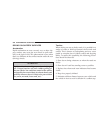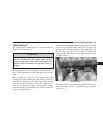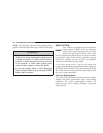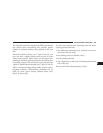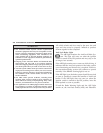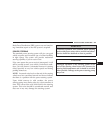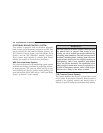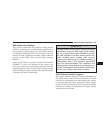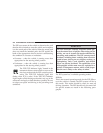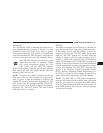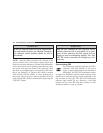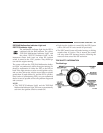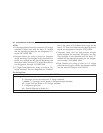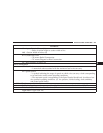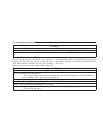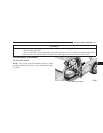
The ESP uses sensors in the vehicle to determine the path
that the driver intends to steer the vehicle and compares
it to the actual path of the vehicle. When the actual path
does not match the intended path, the ESP applies the
brake of the appropriate wheel to assist in counteracting
the condition of oversteer or understeer.
•
Oversteer - when the vehicle is turning more than
appropriate for the steering wheel position.
•
Understeer - when the vehicle is turning less than
appropriate for the steering wheel position.
The ЉESP/TCS Indicator Light,Љ located in the
instrument cluster, starts to flash as soon as the
tires lose traction and the ESP system becomes
active. The ЉESP/TCS Indicator LightЉ also
flashes when TCS is active. If the ЉESP/TCS Indicator
LightЉ begins to flash during acceleration, ease up on the
accelerator and apply as little throttle as possible. Be sure
to adapt your speed and driving to the prevailing road
conditions.
WARNING!
The ESP (Electronic Stability Program) cannot pre-
vent the natural laws of physics from acting on the
vehicle, nor can it increase the traction afforded by
prevailing road conditions. The ESP cannot prevent
accidents, including those resulting from excessive
speed in turns, driving on very slippery surfaces, or
hydroplaning. Only a safe, attentive, and skillful
driver can prevent accidents. The capabilities of an
ESP-equipped vehicle must never be exploited in a
reckless or dangerous manner, which could jeopar-
dize the user’s safety or the safety of others.
The ESP system has 3 available operating modes:
ESP On
This is the normal operating mode for the ESP. When-
ever the vehicle is started, the ESP system will be in
this mode. This mode should be used for most all
driving situations. The ESP should only be turned off
for specific reasons as noted in the following para-
graphs.
210 STARTING AND OPERATING



